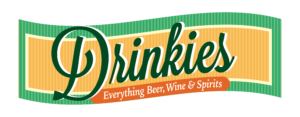Merlot, a red wine grape variety embraced for its rich flavors, has secured its place among the classics of red wine varieties.
Merlot is a wine grape variety with a dark blue hue, utilized both as a blending grape and for making varietal wines. The name “Merlot” is believed to be a diminutive of “merle,” the French term for the blackbird, likely alluding to the grape’s color. Renowned for its softness and “fleshiness,” as well as its tendency to ripen earlier, Merlot is a popular choice for blending with the more robust and later-ripening Cabernet Sauvignon, known for its higher tannin content.
Darker and heavier than a Pinot Noir, it’s known for its versatility, Merlot is often enjoyed both as a standalone varietal and as a blending grape in various wine styles.
How is Merlot Made?
- Vineyard Cultivation:
- Merlot grapes thrive in a variety of climates but prefer moderate temperatures. Vineyard sites with well-drained soils contribute to the grape’s optimal development.
- Harvesting:
- Merlot grapes are typically harvested earlier than other red varieties to maintain their balanced acidity. The timing of the harvest plays a crucial role in capturing the desired fruit characteristics.
- Fermentation:
- After harvesting, the grapes are destemmed and crushed. Merlot fermentation often occurs in stainless steel tanks or oak barrels. The choice of vessel influences the wine’s final flavor profile.
- Aging:
- Merlot wines may undergo aging in various containers, including stainless steel, concrete, or oak barrels. The duration of aging varies, with some Merlots designed for early consumption, showcasing vibrant fruit, and others for extended aging, developing complexity and depth.
History of Merlot:
The earliest documented reference to Merlot dates back to 1784 when a Bordeaux official praised wine made from the grape in the Libournais region. The name “Merlot” was later coined in 1824, derived from the local Occitan word “merlau,” meaning blackbird, due to the bird’s fondness for the ripe grapes.
In the 19th century, setbacks like a severe frost in 1956 and vineyard losses in the 1960s led Bordeaux authorities to impose a ban on new Merlot plantings from 1970 to 1975.
Merlot made its Italian debut around Venice in 1855 under the synonym Bordò. It also found its way to Switzerland in the 19th century, specifically the canton of Ticino, between 1905 and 1910. In the 1990s, Merlot experienced a surge in popularity in the United States, influenced by increased red wine consumption following the 60 Minutes report on the French Paradox.
The ease of pronouncing “Merlot” and its approachable, fruity profile contributed to its widespread appeal among American wine drinkers.
World’s Best Merlot Regions
- Bordeaux, France:
- Bordeaux remains the epicenter of Merlot production, particularly in the Right Bank appellations of Pomerol and Saint-Émilion. Here, Merlot takes center stage, crafting wines of elegance and finesse.
- Napa Valley, California:
- Napa Valley is synonymous with exceptional Merlot, showcasing ripe fruit flavors and a plush texture. Wineries in regions like Carneros and Oak Knoll contribute to California’s reputation for high-quality Merlot.
- Tuscany, Italy:
- Merlot plays a significant role in the Super Tuscan blends of Italy, particularly in regions like Bolgheri. The warm Mediterranean climate contributes to the development of ripe fruit flavors and a velvety texture.
Popular Merlot Labels
- Duckhorn Vineyards:
- Duckhorn Vineyards, based in Napa Valley, is renowned for its commitment to Merlot excellence. Their flagship wine, Duckhorn Merlot, reflects the varietal’s lush and velvety characteristics.
- Château Pétrus:
- Located in the Pomerol appellation of Bordeaux, Château Pétrus is a legendary estate producing some of the world’s most sought-after Merlots. Known for their opulence and aging potential, Pétrus wines are coveted by collectors.
- Clos des Andes:
- Clos des Andes, situated in the Uco Valley of Argentina, has gained recognition for its expressive Merlot. The high-altitude vineyards contribute to the wine’s freshness and vibrant fruit character.
Best Foods to Pair with Merlot
Merlot’s approachable nature and balanced characteristics make it an excellent companion for a variety of dishes. Here are some popular pairings:
- Roast Chicken:
- The soft tannins and fruity flavors of Merlot complement the savory notes of roast chicken, creating a harmonious pairing.
- Grilled Lamb:
- The plush texture of Merlot stands up well to the richness of grilled lamb, while its fruitiness enhances the meat’s flavors.
- Mushroom Risotto:
- Merlot’s earthy undertones align seamlessly with the savory notes of mushroom risotto, creating a delightful combination.
- Tomato-Based Pasta Dishes:
- The acidity in Merlot complements the acidity in tomato-based pasta sauces, making it an ideal match for dishes like spaghetti Bolognese.
- Soft Cheeses:
- Merlot’s velvety texture pairs beautifully with soft cheeses such as Brie or Camembert, creating a luscious and indulgent combination.
Merlot – The Perfect Sip On Winter’s Night
As we conclude our journey through the world of Merlot, we find ourselves immersed in the charm and accessibility that define this red wine grape. From the historic vineyards of Bordeaux to the sun-drenched landscapes of Napa Valley and beyond, Merlot continues to captivate wine enthusiasts with its versatility and appeal.
Whether sipping a velvety Duckhorn Merlot from Napa Valley or exploring the time-honored elegance of Château Pétrus, each glass of Merlot tells a story of terroir, tradition, and the enduring allure of this varietal.
Learn about some other types of red wine.

























